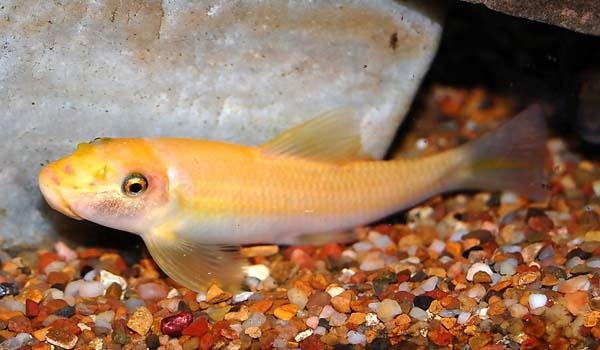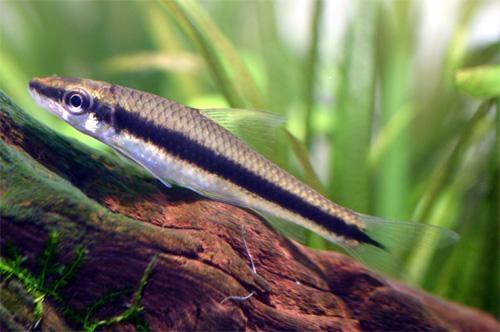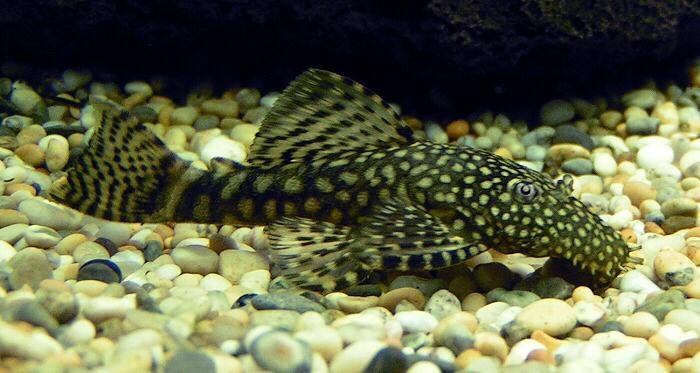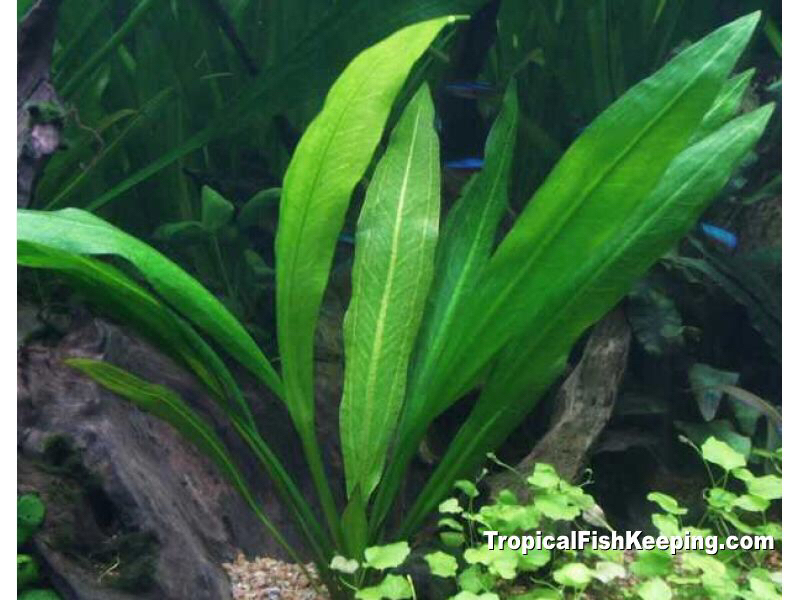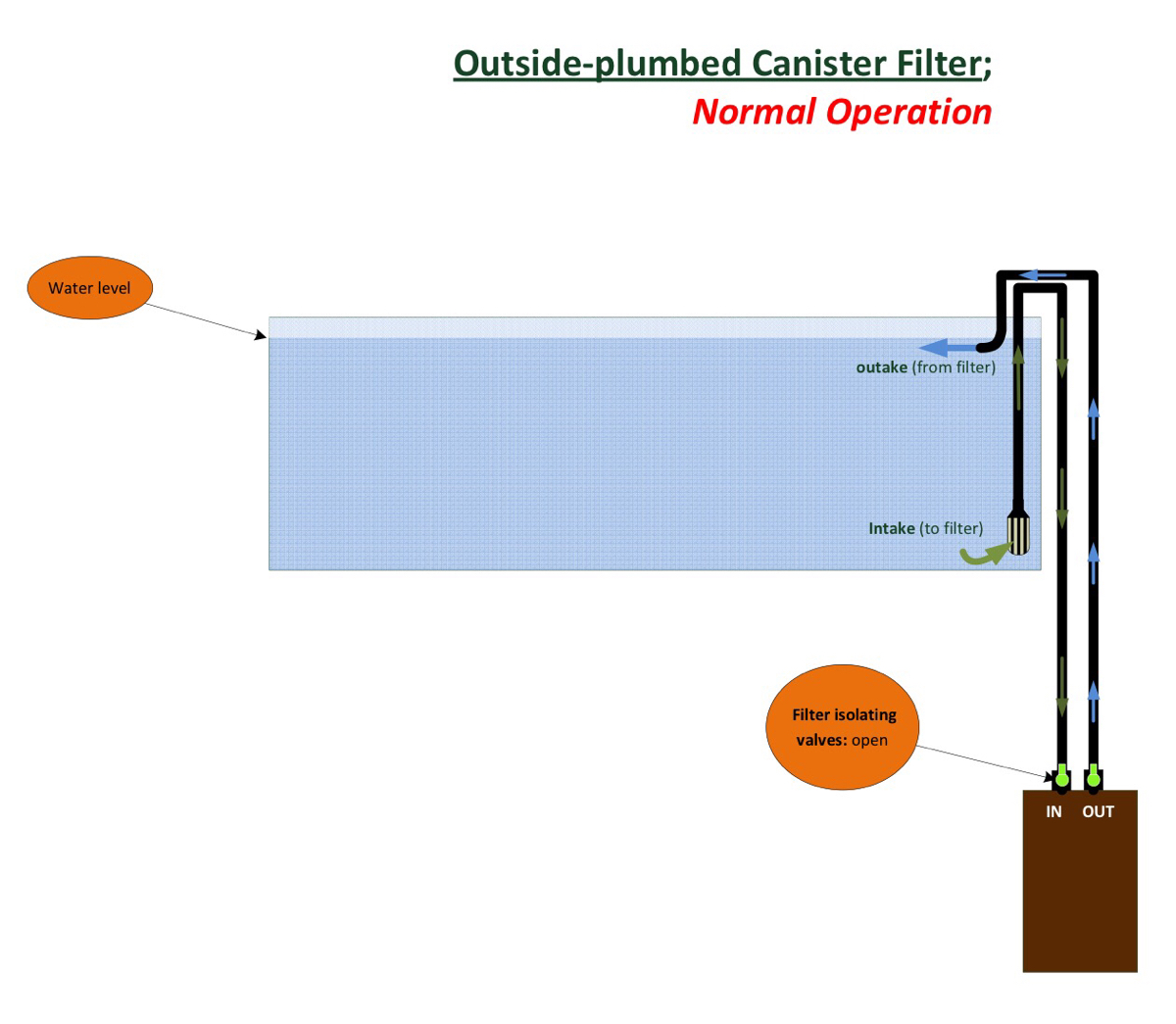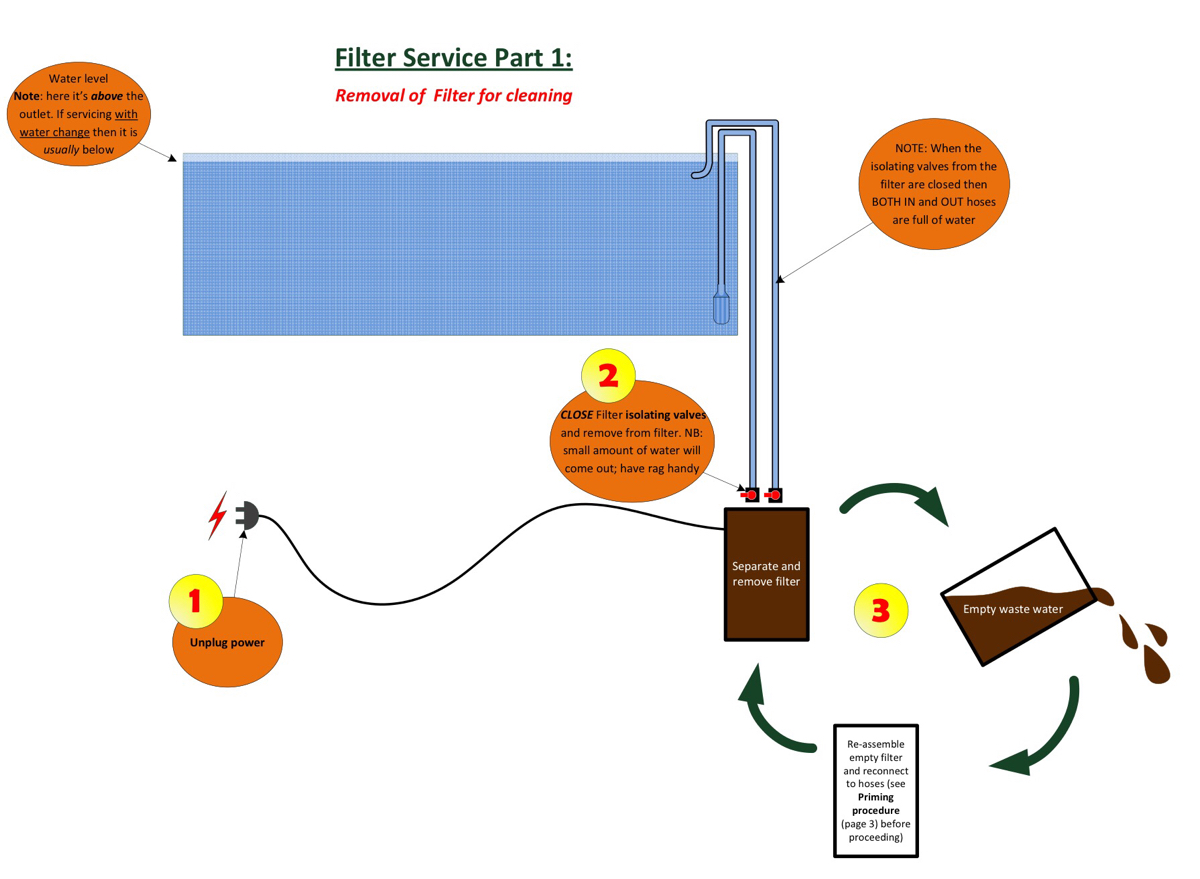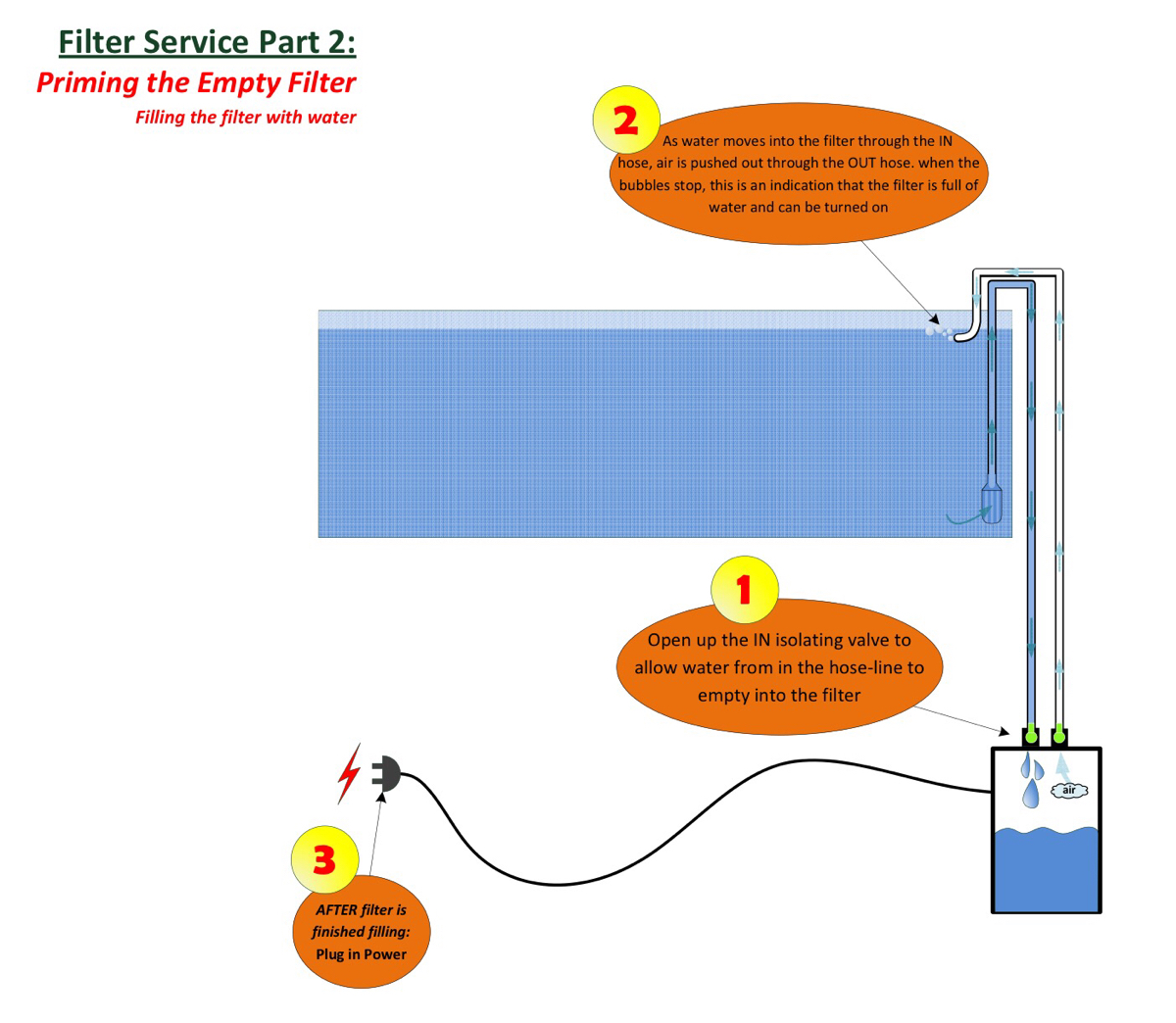Title Page
STARTERS
The Basics
-
Employee
- Matthias
- Kathryn
- Steven
-
Date
-
Time Started
Setup
-
Ask reception for key to unlock back door.
-
Remove REMOVE FIRST TWO CHAIRS from either side, closest to the tanks. Place them in the boardroom.
-
Drop sheet on floor in front of tanks
-
Attach DRAIN HOSE to middle centre of top tank and run FLAT along the front of the chairs, being sure that it's not going to catch any one's feet. Be sure to lay end round to the right on the stone covered garden bed.
Observations
-
Photos Before. 1 each overall. 2 half closeups of the TOP TANK
-
Both filters flowing on arrival?
-
Plan for servicing of filter in question. NB: even if you can see the cause (eg. Unplugged power) DO NOT fix it until AFTER SERVICE! (Canister filters are enclosed system and can become full anaerobic poison after several hours of no flow)
FISH
TOP
-
Platies and Tetras
- Great; vibrant, eager for food
- some individuals not right.
- sulky, sluggish, isolated from group
- dead fish, cloudy stinky water
-
Take photos of individuals and check for CAUSES. Questions: 1. Is it just an individual or are many affected? 2. Check for uneaten food, levels of ammonia or nitrite. 3. Filter or heater stopped or malfunctioning?
-
Anything on BODY? <br>WHITE SPOTS?<br>FUNGUS?<br>WOUNDS?
-
Take PHOTO of cases and NOTE down details.
-
Plan for LARGE WATER CHANGE (75-90%) with thorough GRAVEL VAC. Use STRESS COAT and BLUE SALTS to guard against chlorine and infection.
-
CONTACT BRUCE IMMEDIATELY
-
Take PHOTO where possible and NOTE down details.
-
Looking good? Place a pinch of TETRABITS in and observe how they eat.
BOTTOM
-
Goldfish
- Great; vibrant, eager for food
- some individuals not right.
- sulky, sluggish, isolated from group
- dead fish, cloudy stinky water
-
Take photos of individuals and check for CAUSES. Questions: 1. Is it just an individual or are many affected? 2. Check for uneaten food, levels of ammonia or nitrite. 3. Filter or heater stopped or malfunctioning?
-
Anything on BODY? <br>WHITE SPOTS?<br>FUNGUS?<br>WOUNDS?
-
Take PHOTO of cases and NOTE down details.
-
Plan for LARGE WATER CHANGE (75-90%) with thorough GRAVEL VAC. Use STRESS COAT and BLUE SALTS to guard against chlorine and infection.
-
CONTACT BRUCE IMMEDIATELY
-
Take PHOTO where possible and NOTE down details.
-
Looking good? Place a pinch of SPIRULINA FLAKES in and observe how they eat.
The Workers: SUCKING CATS & FLYING FOXES
TOP
-
SUCKING CAT/s sighted? (1-2) click for pic below
-
Details.
-
Sucking Cats. Click here for Picture==>
-
Sucking cats
-
SIAMESE FLYING FOX/es sighted? (2-3) click for pic below
-
Details.
-
Siamese Flying Fox. Click here for Picture==>
-
Siamese Flying Fox
-
How's the algae levels on GLASS & PLANTS?
- Lots of soft brown/green dust
- Very clear. A few spots on glass and old leaves
- Furry black algae growing on old leaves, pump, glass
- heavy with dark green spots on glass
- dark green algae all over rocks
-
This is an indication that there are no or low numbers of SIAMESE FLYING FOX. Mention in notes.
-
Remove as much as possible, prune old affected leaves off plants. Vacuum up loose pieces from after cleaning glass
-
This is possibly an indication that there are no SUCKING CATS. Mention in notes.
-
Check light TIMER and nitrate levels.
-
Plan for an "Adrian Special"; BEFORE draining, turn OFF pumps, scrape all of every glass surface and carefully brush clean all rocks Then drain 80% water.
BOTTOM
-
BRISTLENOSE CAT/s sighted? (1-2). Often sitting in or on the wood. picture below if need
-
Details.
-
Bristle nose. Click here for Picture==>
-
Bristle nose catfish
-
How's the algae levels on GLASS & PLANTS?
- Lots of soft brown/green dust
- Very clear. A few spots on glass and old leaves
- Furry black algae growing on old leaves, pump, glass
- heavy with dark green spots on glass
- dark green algae all over rocks
-
This is an indication that the lights have been left on and/or nutrient buildup.
-
Thoroughly clean glass. Plan for filter clean and 75% water change Vacuum up loose pieces from after cleaning glass. Remove rocks and wood (careful to not take bristle nose cat with you!) and place in bucket and pour boiling water over large affected areas. This will kill the algae and the fish will eat it as it falls off
-
This is possibly an indication that there are no SUCKING CATS. Mention in notes.
-
This is an indication that the lights have been left on and/or nutrient buildup.
-
Plan for an "Adrian Special"; BEFORE draining, turn OFF pumps, scrape all of every glass surface and carefully brush clean all rocks Then drain 80% water.
PLANTS
-
AMAZON SWORDS. Click here for Picture==>
-
AMAZON SWORD
-
How are they looking?
- great. shiny vibrant leaves
- OK. medium quality new growth. old growth hasn't prematurely fallen off
- small new growth, prematurely old and yellowing leaves
- curled deformed leaves, lots of dark spotted algae on leaves
-
Possibly low in NITRATE and/or POTASSIUM (K) CHECK levels. (Section 4). 10ppm or more with still poor growth possibly means therefore not enough K and thus they are being starved. Contact Bruce for further instructions.
-
Great. Peel off any old leaves from the outside. it's not unusual to be removing 10 or more leaves!
-
Possibly a deficiency in PHOS which is a mobile nutrient. (Here only available via the fish food) If phos levels sufficient then possibly not enough K. check with BRUCE by SMS.
-
Crypts. Click here for Picture==>
-
CRYPTS
-
How are they looking?
- great. shiny vibrant leaves
- OK. medium quality new growth. old growth hasn't prematurely fallen off
- small new growth, prematurely old and yellowing leaves
- curled deformed leaves, lots of dark spotted algae on leaves
-
PEEL AWAY any old and ageing leaves from base
-
GREEN LOTUS LILY. Click here for Picture==>
-
GREEN LOTUS LILY
-
How are they looking?
- great. new leaves are large and pointing upwards, shiny lustre with good deep colours
- growing surface pads
- poor, new growth smaller than the older
- pale, yellowing leaves
- lots of prematurely aged older leaves, holes and discoloured copper green patches
- deformed and stunted new growth, crinkled leaves
-
Remove ALL surface pads. This includes the next new shoot that is coming through. This feels mean but its the only way to guarantee that it will resume growing submerged leaves
-
Possibly low in NITRATE and/or POTASSIUM (K) CHECK levels. (Section 4). 10ppm or more with still poor growth possibly means therefore not enough K and thus they are being starved. Contact Bruce for further instructions.
-
Deformed new growth? May have to review K dosage levels. Check NITRATE and PHOS and check with BRUCE by SMS.
-
Possibly a deficiency in PHOS which is a mobile nutrient. (Here only available via the fish food) If phos levels sufficient then possibly not enough K. check with BRUCE by SMS.
-
Remove all old and ageing leaves from base CAREFUL that you have the right one!
-
Great. Remove all old and ageing leaves from base CAREFUL that you have the right one!
Tests part 1
Tests part 1
TOP TANK
-
TEMPERATURE test (ideal 25-26 C)
-
A little cool. Is heater functioning/plugged in??
-
Replaced?
-
Unplug and remove faulty unit. Notify Bruce to arrange replacement.
-
Depending on how long before replacement is likely to be installed then leave post-water change temp approx 26 degrees.
-
Increase THERMOSTAT (clockwise) and make note of how much.
-
Increased THERMOSTAT by:
-
Way too hot. Almost certainly heater is malfunction functioning. Does the thermostat work?
-
Replacement heater on hand?
-
Unplug and remove faulty unit. Notify Bruce to arrange replacement.
-
Depending on how long before replacement is likely to be installed then leave post-water change temp approx 26 degrees.
-
Decrease THERMOSTAT (clockwise) and make note of how much.
-
Decreased THERMOSTAT by:
-
Contact Bruce.
-
A little warm. Is heater functioning?
-
Replaced?
-
Unplug and remove faulty unit. Notify Bruce to arrange replacement.
-
Depending on how long before replacement is likely to be installed then leave post-water change temp approx 26 degrees.
-
Decrease THERMOSTAT (clockwise) and make note of how much.
-
Decreased THERMOSTAT by:
-
Good. Refill with HEATER or KETTLES OF BOILED WATER in COLD months or by water changes 50% or greater.
BOTTOM TANK
-
TEMPERATURE test (ideal 18 C)
-
Most is LIKELY EXPLANATION is a RECENT WATER CHANGE. Or LIGHTS have been off (they are off over a weekend), thus not as much heat produced.
-
There is no other source of heat other than lights and filter. Has the light been left on? Is filter running hot? Hot day?
-
Service filter. Particularly motor head, impeller etc
-
Contact Bruce.
-
Look at making a larger water change. But be careful to not give the fish temperature shock
-
Rinse 4 TEST VIALS in tank water: pH (square vial) and GH (large round vial) NITRATE & PHOS (small glass) MEASURE 5ml in each and SET ASIDE for later. Tip: use SQUARE VIAL or a SYRINGE to measure an accurate 5ml for the GH.
The Drain
The Drain (50%)
-
Planning a FILTER SERVICE?
-
If you are planning a FILTER CLEAN then best to use the gravel vacuum flow to wash the media in so prepare this now or during the drain.
GRAVEL VACUUM
-
Be sure the TWO SUCTION CUPS on the HOSE are secure to FRONT of GLASS. (HINT: WETTING improves their suction) NOTE: bottom tank has smaller fall so SYPHON is slower and harder to start. Best to stir up the gravel by hand and then using FAST DRAIN to take out debris.
TOP TANK
-
How dirty was it?
BOTTOM TANK
-
How dirty was it?
-
Normally this gravel is very light due to fish always digging through. If it is heavy with debris then perhaps filter has slowed and needs service.
FAST DRAIN
-
Attach THREADED BASKET STRAINER (from bucket) to end of HOSE
-
Remove VACUUM HEAD & place HOSE inside front glass at the DESIRED HEIGHT of water change. (standard for these tanks: is 50-60%)
% Size of Water Change
The Refill
The Refill
-
Orientate tank-end HOSE to be HORIZONTAL and Remove BASKET STRAINER and return to kit.
-
Turn on OUTSIDE TAP to FLUSH out old water and set the suitable RATE of flow. After 2 seconds fit hose to TAP OUTLET.
-
SOUP HEATER for top tank in COLD months or by water changes of 50% or greater (alternatively 2-3 kettles of boiled water) REMEMBER: always plug into WALL OUTLET. Try to find OPEN SPACE, away from plants.
Things To Do During Refill
-
CLEAN GLASS; easiest at LOW WATER LEVELS. SOFT ALGAE lightly with sponge. DARK GREEN spots: best with SCRAPER.
-
FILTER SERVICE?
-
Which filter/s?
- TOP
- BOTTOM
-
Click here for INSTRUCTIONS ==>
-
This is a canister filter under normal function:
-
FILTER SERVICE PART 1; Removal of filter for cleaning:
-
FILTER SERVICE PART 2; preparing the lines for priming
(NB: with the larger white filter, there is only one valve for both IN and OUT lines so the best way to empty the out line and/or prime the IN line is by holding the tap low into a bucket and opening up to clear the OUT line. If the IN is also empty due to water level dropping below the intake point, then, when the water level is again full, you can make a short suck on the end to re-start the siphon in the IN line. Then reconnect to filter) -
FILTER SERVICE PART 3; priming the filter
Tests (continued) NOTE: the following advice is based on PRE-WATER CHANGE samples
TOP TANK
-
pH Test? 3 drops in 5ml. (ideal range 7-7.1)
-
ADD approx 2 tsp CORAL SAND.
-
ADD approx 3 tsp CORAL SAND
-
Is this expected? Been a recent large dose of coral sand last time?
-
Rinse test tube thoroughly and retest. (Any traces of ammonia or GH tester solution will give a false alkaline reading)
-
WOAH! Unlikely! Rinse test tube thoroughly and retest. (Any traces of AMMONIA TEST or GH TEST solutions will give a false alkaline reading) If still high then we must assume that there has been an excess amount of coral sand and all we can do is water change. It will eventually come down as the coral sand dissolves.
-
GH TEST. number of drops to turn from ORANGE to GREEN
-
SIZE of water change:
-
ADD 2 TSP SALTS
-
ADD 3 TSP SALTS
-
SIZE of water change:
-
ADD up to 1 TSP SALTS
-
ADD up to 3 TSP SALTS
-
ADD up to 4 TSP SALTS
-
SIZE of water change:
-
NO SALTS and let WC reduce the GH.
-
ADD 1 TSP SALT
-
NITRATE TEST
-
Depending on state of plants, this is POSSIBLY grounds for increase in BASIC-GRO dose. Contact Bruce for further instructions.
-
GENERALLY this is the OPTIMUM RANGE. HOWEVER if there is POOR PLANT GROWTH observed then possibly means therefore not enough K and thus they are being starved. Contact Bruce for further instructions.
-
Almost certainly and LACK of POTASSIUM. Look at INCREASING DAILY-GRO (it contains potassium also) dose. Discuss with BRUCE later
-
PHOSPHATE TEST
-
The only source for PHOS in this tank is from the Tetrabits. Generally if there is no algae problem then don't worry. Water change will dilute. Otherwise consider increasing DAILY-GRO.
-
Generally thus is the OPTIMUM RANGE. Some say 1/10th of the nitrate level is also suitable. However if there is POOR GROWTH observed then possibly means not enough Phos and/or K and thus they are being starved. Contact Bruce for further instructions.
-
Is there premature aging/falling off of leaves on any of the plants?
-
Check with Bruce but may have to increase levels by either increased feeding of fish food (tetrabits) or manual doses of LIQUID PHOS.
-
Then don't worry! Enjoy the algae-free aquarium!
BOTTOM TANK
-
pH Test? 3 drops in 5ml. (ideal range 7.2-7.3)
-
ADD approx 1 tsp CORAL SAND.
-
ADD approx 2 tsp CORAL SAND.
-
ADD approx 3 tsp CORAL SAND.
-
While possible it's unlikely, even in this tank. Rinse test tube thoroughly and retest. (Any traces of AMMONIA TEST or GH TEST solutions will give a false alkaline reading) If still high then we must assume that there has been an excess amount of coral sand and all we can do is water change. It will eventually come down as the coral sand dissolves.
-
GH TEST. number of drops to turn from ORANGE to GREEN
-
SIZE of water change:
-
ADD 2 TSP SALTS
-
ADD 3 TSP SALTS
-
SIZE of water change:
-
ADD up to TSP SALTS
-
ADD up to 3 TSP SALTS
-
ADD up to 4 TSP SALTS
-
SIZE of water change:
-
NO SALTS and let WC reduce the GH.
-
ADD 1 TSP SALT
-
ADD 2 TSP SALT
Additives
TOP TANK
-
Salts added? (Low GH)
-
How many teaspoons?
-
NOTE: NO SALTS DIRECTLY ON PLANTS!! - The methylene blue in this salt stains. Either MIX in by hand, or premix in cup of HOT WATER.
-
Coral sand added? (Low pH)
-
How many teaspoons?
-
BASIC-GRO dose (5 caps/ 25ml usual)
-
How much?
- 1/2 Blue Cap (2.5ml)
- 1 Blue Cap (5ml)
- 2 Blue Caps (10ml)
- 3 Blue Caps (15ml)
- 4 Blue Caps (20ml)
- 5 Blue caps (25ml)
BOTTOM TANK
-
Salts added? (Low GH)
-
How many teaspoons?
-
NOTE: NO SALTS DIRECTLY ON Rocks!! - The methylene blue in this salt stains. Either MIX in by hand, or premix in cup of HOT WATER.
-
Coral sand added? (Low pH)
-
How many teaspoons?
-
Water level high enough? Turn FILTER PUMPS ON.
Packing up
SUPPLIES ; in OFFICE, by PRINTER. ANY REFILLING IN SINK OR OUTSIDE!
-
SALTS refill?
-
FOOD REPLACE/ REFILL?
-
WHICH KIND?
- TETRABITS
- SPIRULINA FLAKES
- SPIRULINA TABLETS
- DISCUS PELLETS
- GOLDFISH FLAKES/CRISPS
-
What's needed next time?
- TETRABITS
- SPIRULINA FLAKES
- SPIRULINA TABLETS
- DISCUS PELLETS
- GOLDFISH FLAKES/CRISPS
-
BASIC-GRO refill? <br>NOTE: only WE use this.
-
HOW MUCH IS LEFT?
-
DAILY-GRO dropper bottle topped up?
-
DAILY-GRO main supply refilled?
-
HOW MUCH IS LEFT?
-
POTASSIUM dropper bottle topped up?
-
POTASSIUM supply refill? <br> (If wishing to replace but still a small amount remains in CURRENT BOTTLE, swap over and leave OLD BOTTLE behind and can pour in rest into the new bottle at a later date)<br>
-
HOW MUCH IS LEFT?
-
Can put in a small pinch of TETRABITS in top two and SPIRULINA FLAKES in Bottom as departing treat :)
Equipment Check
-
Timer on the correct time? NOTE: timer is only on the TOP TANK. Bottom tank is manually turned on/off
-
Can you account for the discrepancy (eg. Power failure)?
-
Replacement unit on hand?
-
IMPORTANT! Remove and notify the staff. They will have to MANUALLY turn on and off until a new one is sourced. Leave old timer there so they can match the settings if they have to get one themselves
-
LIGHTS: All tubes working?
-
Details
-
ONSITE SERVICE EQUIPMENT; REPAIRS/REPLACEMENTS needed? <br>(Hose leaks, suction cups replaced etc)
-
Details
-
Notes
FINAL CHECKS
-
FILTER PUMPS ON and functioning?
-
Top heater plugged in and functioning?
-
Chairs back in position?
-
OUTSIDE GLASS, CABINETRY etc CLEAN & DRY?
-
Got your: BASKET STRAINER? TOOTH BRUSH? TEASPOON?
-
Photos After. 1 x Each from FRONT CLOSEUPS of any REARRANGED PLANT.
-
Time Finished






